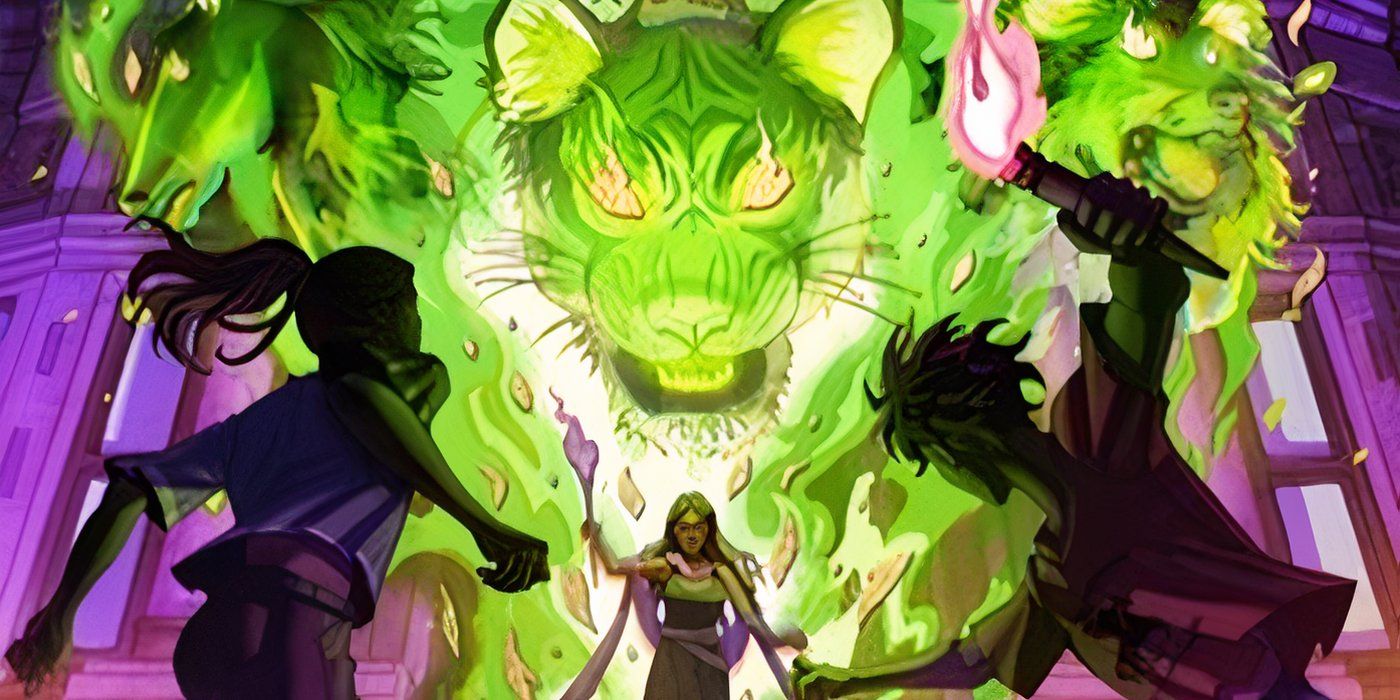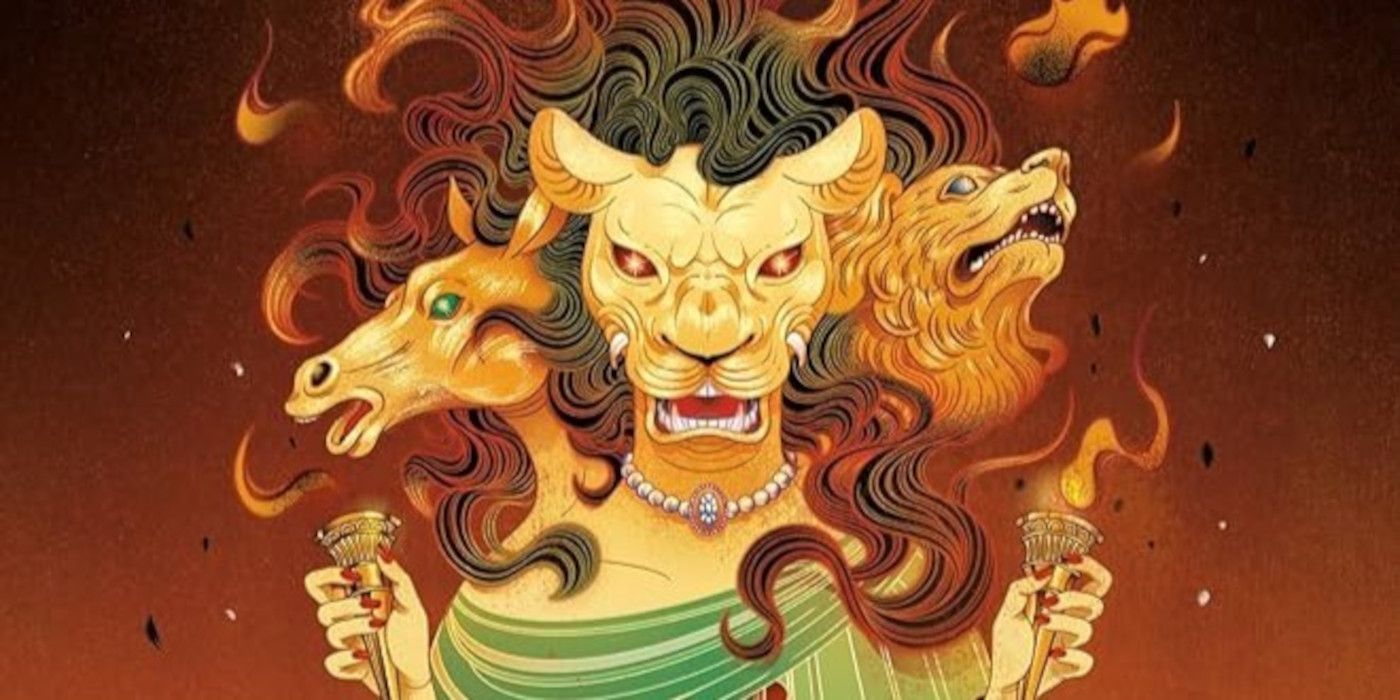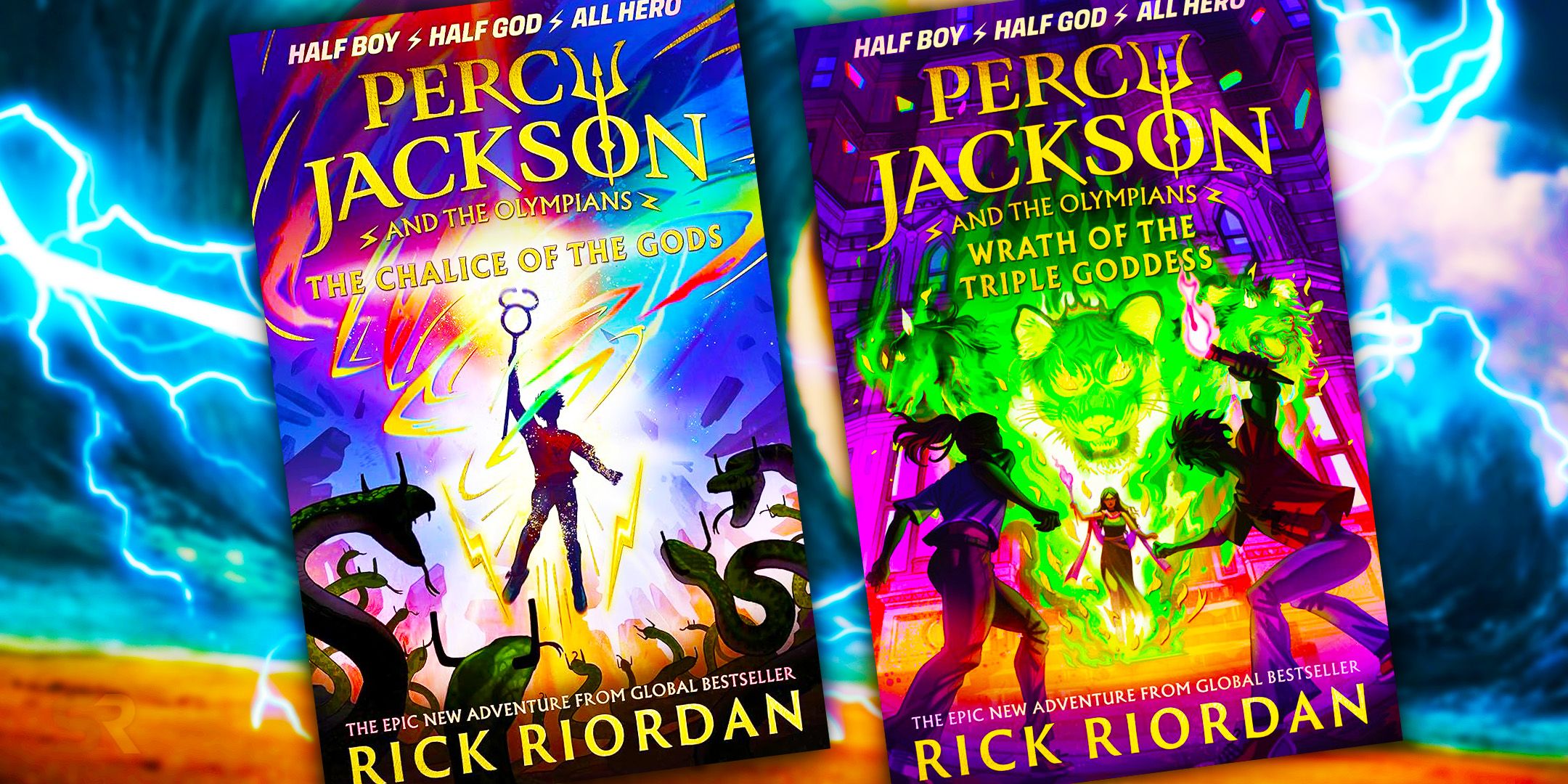Wrath of the Triple Goddess is officially on shelves, and the seventh Percy Jackson & the Olympians book revolves around a quest for the goddess Hecate. After the events of The Chalice of the Gods, Percy still needs two recommendation letters to get into New Rome University — and Hecate gives him an opportunity to obtain a second one. All Percy and his friends need to do is watch the goddess’ mastiff and polecat while she’s away. This sounds like an easy task, but it quickly spirals into the usual life-or-death adventure.
Rick Riordan’s Percy Jackson books are always introducing new figures from Greek mythology, and Hecate and her pets have intriguing backgrounds. This is why a new narrative surrounding the goddess is so exciting, though it may leave readers questioning how accurate Riordan’s character is to the myths she’s based on. The title of the newest Percy Jackson sequel may also raise questions about why Hecate is called the Triple Goddess.
Who Is Percy Jackson & The Olympians’ Hecate In Greek Mythology?
Hecate Is The Goddess Of Magic & Witchcraft
Hecate is the goddess of magic and witchcraft in Greek mythology, which makes her the perfect figure to appear in a Halloween-set Percy Jackson book. In fact, the holiday is the entire reason she’s away in Wrath of the Triple Goddess. Because Hecate is connected to imagery commonly associated with Halloween, she believes people will be more likely to worship her during this time. In addition to being the goddess of magic and witchcraft, Hecate is also connected to the moon, ghosts, crossroads, and necromancy (via Theoi Greek Mythology).
Hecate is an intriguing figure from the Greek myths — and that’s no surprise given her parentage.
Needless to say, Hecate is an intriguing figure from Greek mythology — and that’s no surprise given her parentage. She’s the daughter of the Titans Perses and Asteria, who are the god and goddess of destruction and divination, respectively. Hecate was initially portrayed holding two torches, which she uses to help Demeter search for Persephone after Hades abducts her. Hecate also has a mastiff and polecat in the Greek myths, which explains why Riordan uses these creatures to form the premise of his 2024 Percy Jackson book.
These animals are Hecate’s familiars in Greek mythology, and they’re actually humans from other stories who have been transformed. Riordan abides by this, revealing that Hecate’s dog is the Trojan royal Hecuba. In Wrath of the Triple Goddess, the polecat is a witch named Gale (though some stories claim she’s the midwife Galinthias). Hecate’s connections to animals don’t stop at these familiars, as the goddess’ depiction changed over time. Eventually, her appearance took on a more bestial-looking form, which earned her the nickname “Triple Goddess.”
Why Hecate Is Called The Triple Goddess
She’s Portrayed With Three Bodies & Three Heads
2024’s new Percy Jackson book refers to Hecate as the Triple Goddess, and this nickname stems from how she’s depicted in certain Greek myths. Although her initial form is a single figure holding two torches, Hecate is later described as having three bodies back-to-back (via Britannica). This concept comes from Hecate being the goddess of the crossroads; having three separate heads allows her to look down all paths.
The
Percy Jackson
cover features Hecate with the heads of a lion, dog and horse, another common depiction of her.
Another iteration of Hecate shows her with three different animal heads, a form that can be seen on the cover of The Wrath of the Triple Goddess. This version of the goddess grants her a single body, which attaches the heads of a dog, snake, and horse (via The Collector). Sometimes, these animals are swapped out for others. The Percy Jackson cover features Hecate with the heads of a lion, dog and horse, another common depiction of her.
How Percy Jackson’s Triple Goddess Compares To Greek Mythology
Rick Riordan Modernizes Hecate But Remains Faithful To Her Portrayals
As one can see from the cover of the new Percy Jackson book, The Wrath of the Triple Goddess leans into the later portrayal of the goddess. In fact, she appears to Percy at the beginning of the book as an intimidating form with three heads. However, Riordan also calls back to other depictions of Hecate. The two torches in her home — only to be used for emergencies — clearly represent the earliest version of the goddess. And the author references all of her connections: ghosts, crossroads, animals, witches, magic, and more.
|
Percy Jackson & The Olympians Books In Order |
Release Year |
|---|---|
|
The Lightning Thief |
2005 |
|
The Sea of Monsters |
2006 |
|
The Titan’s Curse |
2007 |
|
The Battle of the Labyrinth |
2008 |
|
The Last Olympian |
2009 |
|
The Chalice of the Gods |
2023 |
|
Wrath of the Triple Goddess |
2024 |
Like all of Riordan’s Greek gods and goddesses, Hecate is modernized for the sake of the Percy Jackson books. However, the author remains faithful to her portrayal in Greek mythology, even showing the fine line she walks between goodness and evil. The Wrath of the Triple Goddess does a great job with Hecate in this regard, elaborating on her character further after multiple mentions in Percy Jackson & the Olympians and a few appearances in Heroes of Olympus.
Source: Theoi Greek Mythology, Britannica, The Collector







